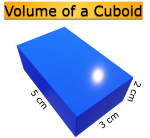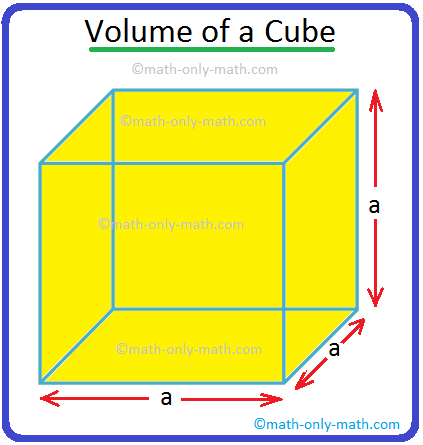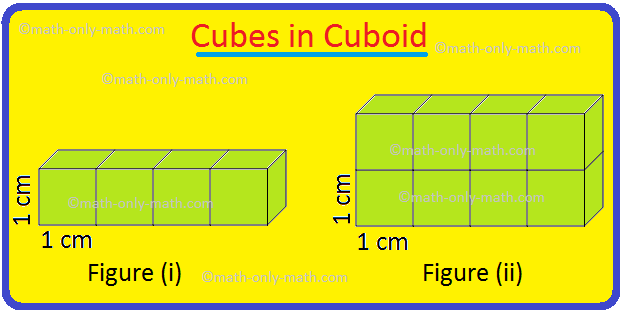Subscribe to our ▶️ YouTube channel 🔴 for the latest videos, updates, and tips.
Home | About Us | Contact Us | Privacy | Math Blog
Compound Interest by Using Formula
It is very easy to calculate compound interest by using formula.
We can derive general formulae for calculating compound interest in various cases, as given below.
Compound Interest by Using Formula, when it is calculated annually
Case I:
When the interest is compounded annually
Let principal = $ P, rate = R % per annum and time = n years.
Then, the amount A is given by the formula
A = P (1 + R/100)ⁿ
1. Find the amount of $ 8000 for 3 years, compounded annually at 5% per annum. Also, find the compound interest.
Solution:
Here, P = $ 8000, R = 5 % per annum and n = 3 years.
Using the formula A = $ P(1 + R/ 100)ⁿ
amount after 3 years = $ {8000 × (1 + 5/100)³}
= $ (8000 × 21/20 × 21/20 × 21/20)
= $ 9261.
Thus, amount after 3 years = $ 9261.
And, compound interest = $ (9261 - 8000)
Therefore, compound interest = $ 1261.
2. Find the compound interest on $ 6400 for 2 years, compounded annually at 7¹/₂ % per annum.
Solution:
Here, P = $ 6400, R % p. a. and n = 2 years.
Using the formula A = P (1 + R/100)ⁿ
Amount after 2 years = [6400 × {1 + 15/(2 × 100)}²]
= $ (6400 × 43/40 × 43/40)
=$ 7396.
Thus, amount = $ 7396
and compound interest = $ (7396 - 6400)
Therefore, compound interest = $ 996.
Case 2:
When the interest is compounded annually but rates are different for different years
Let principal = $ P, time = 2 years, and let the rates of interest be p % p.a. during the first year and q % p.a. during the second year.
Then, amount after 2 years = $ {P × (1 + P/100) × (1 + q/100)}.
This formula may similarly be extended for any number of years.
1. Find the amount of $ 12000 after 2 years, compounded annually; the rate of interest being 5 % p.a. during the first year and 6 % p.a. during the second year. Also, find the compound interest.
Solution:
Here, P = $12000, p = 5 % p.a. and q = 6 % p.a.
Using the formula A = {P × (1 + P/100) × (1 + q/100)}
amount after 2 years = $ {12000 × (1 + 5/100) × (1 + 6/100)}
= $ (12000 × 21/20 × 53/50)
=$ 13356
Thus, amount after 2 years = $ 13356
And, compound interest = $ (13356 – 12000)
Therefore, compound interest = $ 1356.
Case 3:
When interest is compounded annually but time is a fraction
For example suppose time is 2³/₅ years then,
Amount = P × (1 + R/100)² × [1 + (3/5 × R)/100]
1. Find the compound interest on $ 31250 at 8 % per annum for 2 years. Solution Amount after 2³/₄ years
Solution:
Amount after 2³/₄ years
= $ [31250 × (1 + 8/100)² × (1 + (3/4 × 8)/100)]
= ${31250 × (27/25)² × (53/50)}
= $ (31250 × 27/25 × 27/25 × 53/50)
= $ 38637.
Therefore, Amount = $ 38637,
Hence, compound interest = $ (38637 - 31250) = $ 7387.
Compound Interest by Using Formula, when it is calculated half-yearly
Interest Compounded Half-Yearly
Let principal = $ P, rate = R% per annum, time = a years.
Suppose that the interest is compounded half- yearly.
Then, rate = (R/2) % per half-year, time = (2n) half-years, and
amount = P × (1 + R/(2 × 100))²ⁿ
Compound interest = (amount) - (principal).
1. Find the compound interest on $ 15625 for 1¹/₂ years at 8 % per annum when compounded half-yearly.
Solution:
Here, principal = $ 15625, rate = 8 % per annum = 4% per half-year,
time = 1¹/₂ years = 3 half-years.
Amount = $ [15625 × (1 + 4/100)³]
=$ (15625 × 26/25 × 26/25 × 26/25)= $ 17576.
Compound interest = $ (17576 - 15625) = $ 1951.
2. Find the compound interest on $ 160000 for 2 years at 10% per annum when compounded semi-annually.
Solution:
Here, principal = $ 160000, rate = 10 % per annum = 5% per half-year, time = 2 years = 4 half-years.
Amount = $ {160000 × (1 + 5/100)⁴}
=$ (160000 × 21/20 × 21/20 × 21/20 × 21/20)
compound interest = $ (194481- 160000) = $ 34481.
Compound Interest by Using Formula, when it is calculated Quarterly
Interest Compounded Quarterly
Let principal = $ P. rate = R % per annum, time = n years.
Suppose that the interest is compounded quarterly.
Then, rate = (R/4) % Per quarter, time = (4n) quarters, and
amount = P × (1 + R/(4 × 100))⁴ⁿ
Compound interest = (amount) - (principal).
1. Find the compound interest on $ 125000, if Mike took loan from a bank for 9 months at 8 % per annum, compounded quarterly.
Solution:
Here, principal = $ 125000,
rate = 8 % per annum = (8/4) % per quarter = 2 % per quarter,
time = 9 months = 3 quarters.
Therefore, amount = $ {125000 × ( 1 + 2/100)³}
=$ (125000 × 51/50 × 51/50 × 51/50)= $ 132651
Therefore, compound interest $ (132651 - 125000) = $ 7651.
● Compound Interest
Compound Interest with Growing Principal
Compound Interest with Periodic Deductions
Compound Interest by Using Formula
Compound Interest when Interest is Compounded Yearly
Compound Interest when Interest is Compounded Half-Yearly
Compound Interest when Interest is Compounded Quarterly
Variable Rate of Compound Interest
Difference of Compound Interest and Simple Interest
Practice Test on Compound Interest
Uniform Rate of Growth and Depreciation
● Compound Interest - Worksheet
Worksheet on Compound Interest
Worksheet on Compound Interest when Interest is Compounded Half-Yearly
Worksheet on Compound Interest with Growing Principal
Worksheet on Compound Interest with Periodic Deductions
Worksheet on Variable Rate of Compound Interest
Worksheet on Difference of Compound Interest and Simple Interest
Worksheet on Uniform Rate of Growth
Worksheet on Uniform Rate of Depreciation
Worksheet on Uniform Rate of Growth and Depreciation
8th Grade Math Practice
From Compound Interest by Using Formula to HOME PAGE
Didn't find what you were looking for? Or want to know more information about Math Only Math. Use this Google Search to find what you need.
Recent Articles
-
Worksheet on Area, Perimeter and Volume | Square, Rectangle, Cube,Cubo
Jul 25, 25 12:21 PM
In this worksheet on area perimeter and volume you will get different types of questions on find the perimeter of a rectangle, find the perimeter of a square, find the area of a rectangle, find the ar… -
Worksheet on Volume of a Cube and Cuboid |The Volume of a RectangleBox
Jul 25, 25 03:15 AM
We will practice the questions given in the worksheet on volume of a cube and cuboid. We know the volume of an object is the amount of space occupied by the object.1. Fill in the blanks: -
Volume of a Cuboid | Volume of Cuboid Formula | How to Find the Volume
Jul 24, 25 03:46 PM
Cuboid is a solid box whose every surface is a rectangle of same area or different areas. A cuboid will have a length, breadth and height. Hence we can conclude that volume is 3 dimensional. To measur… -
Volume of a Cube | How to Calculate the Volume of a Cube? | Examples
Jul 23, 25 11:37 AM
A cube is a solid box whose every surface is a square of same area. Take an empty box with open top in the shape of a cube whose each edge is 2 cm. Now fit cubes of edges 1 cm in it. From the figure i… -
5th Grade Volume | Units of Volume | Measurement of Volume|Cubic Units
Jul 20, 25 10:22 AM
Volume is the amount of space enclosed by an object or shape, how much 3-dimensional space (length, height, and width) it occupies. A flat shape like triangle, square and rectangle occupies surface on…





New! Comments
Have your say about what you just read! Leave me a comment in the box below. Ask a Question or Answer a Question.